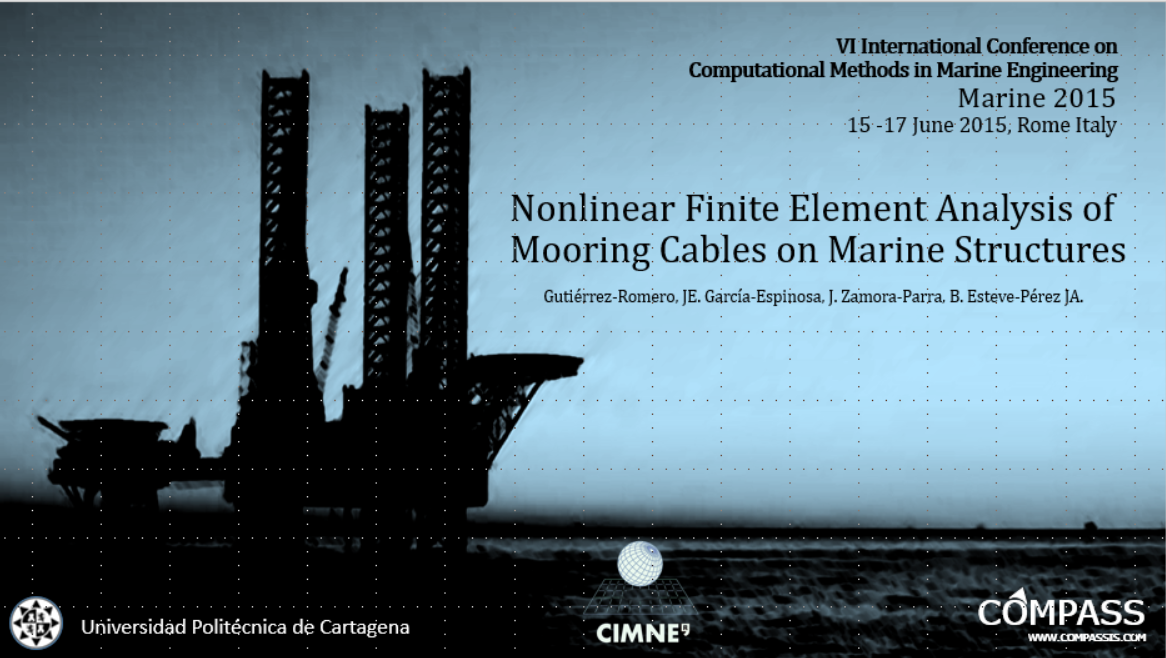| Line 6: | Line 6: | ||
==PRESENTATION== | ==PRESENTATION== | ||
| − | This presentation | + | This presentation was given on Tuesday, June 16th at the VII International Conference on Computational Methods in Marine Engineering (Marine 2015). |
| + | |||
| + | [[File:Draft_García-Espinosa_745184031_8253_marine_2015_mooring.png|link=Media:Draft_García-Espinosa_745184031_1770_MARINE_2015_Mooring.pptx]] | ||
| + | |||
[[File:Draft_García-Espinosa_745184031_8253_marine_2015_mooring.png]] | [[File:Draft_García-Espinosa_745184031_8253_marine_2015_mooring.png]] | ||
[[Media:Draft_García-Espinosa_745184031_1770_MARINE_2015_Mooring.pptx|MARINE_2015_Mooring.pptx]] | [[Media:Draft_García-Espinosa_745184031_1770_MARINE_2015_Mooring.pptx|MARINE_2015_Mooring.pptx]] | ||
Revision as of 21:42, 5 March 2018
ABSTRACT
The complexity of the dynamic response of offshore marine structures requires advanced simulations tools for the accurate assessment of the seakeeping behaviour of these devices. This presentation introduces a new time-domain model for solving the dynamics of moored floating marine devices, specifically offshore wind turbines, subjected to non-linear environmental loads. Different application examples are presented,including a GVA, and the OC3 and OC4 platforms.
PRESENTATION
This presentation was given on Tuesday, June 16th at the VII International Conference on Computational Methods in Marine Engineering (Marine 2015).
Back to Top
Document information
Published on 04/03/18
Submitted on 04/03/18
Licence: CC BY-NC-SA license
Share this document
Keywords
claim authorship
Are you one of the authors of this document?
